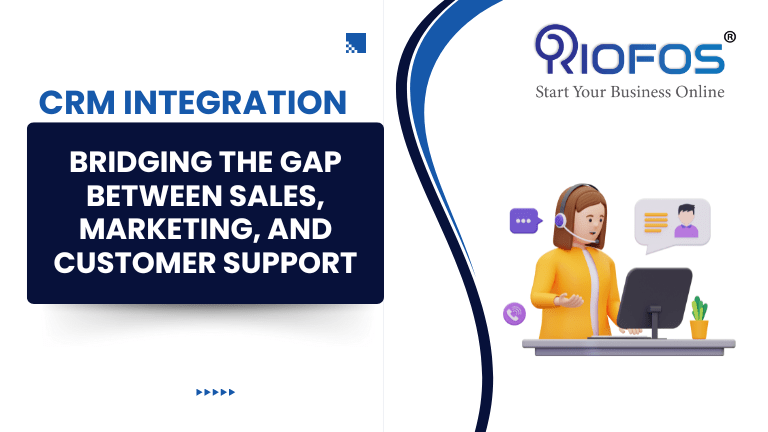In today’s fast-paced business world, customer relationship management (CRM) has become an indispensable tool for companies looking to streamline their operations and boost their profitability. However, the full potential of CRM can only be harnessed when it’s seamlessly integrated into all aspects of a company’s operations, including sales, marketing, and customer support. In this blog, we will explore how CRM integration bridges the gap between these critical business functions, paving the way for more efficient and effective customer engagement.
The Three Pillars: Sales, Marketing, and Customer Support In CRM Integration
Before delving into the significance of CRM integration, let’s first understand the distinct roles played by sales, marketing, and customer support in an organization.
Sales: The sales department is responsible for identifying, pursuing, and closing deals with potential customers. It’s their job to convert leads into paying customers and maintain strong relationships with existing ones.
Marketing: Marketing teams focus on creating awareness, generating interest, and nurturing leads to the point where they become sales-ready. They use various tactics like advertising, content marketing, and social media to attract potential customers and guide them through the sales funnel.
Customer Support: Once customers make a purchase, the customer support department comes into play. They provide post-sales assistance, address issues, and ensure that customers have a positive experience with the company. Customer support plays a vital role in customer retention and satisfaction.
The Siloed Approach
Traditionally, these three pillars—sales, marketing, and customer support—often operated in silos, with limited communication and collaboration between them. This lack of coordination led to several challenges, including:
Inconsistent Information: Different departments might have varying information about the same customer, leading to confusion and potential miscommunication.
Missed Opportunities: Sales might not be aware of leads generated by marketing, and marketing may not be privy to customer support interactions. This leads to missed opportunities for upselling, cross-selling, and providing personalized service.
Data Duplication and Errors: Managing customer data across multiple systems can result in data duplication and errors, making it difficult to have a unified view of the customer.
Inefficient Workflows: Siloed operations can lead to redundant tasks and inefficient workflows, ultimately impacting productivity and customer satisfaction.
CRM Integration: A Solution
To overcome these challenges and bridge the gap between sales, marketing, and customer support, businesses have turned to CRM integration. Here’s how it works:
1. Unified Customer Data
CRM integration ensures that all customer data is stored in a single, centralized database accessible to all relevant departments. This means that sales, marketing, and customer support teams can access the same customer information, resulting in a consistent and accurate view of each customer’s history and preferences.
- Seamless Communication
With CRM integration, sales, marketing, and customer support teams can communicate more effectively. Marketing can pass qualified leads to the sales team, and sales can update customer profiles with sales-related data. This shared knowledge allows for a more personalized and targeted approach to customer interactions.
Automation is a key benefit of CRM integration. When a lead reaches a certain stage of readiness, the CRM system can automatically notify the sales team, prompting them to take action. Marketing can also benefit from automation by sending personalized content to leads based on their interactions and preferences.
- Improved Customer Service
Customer support teams can use CRM data to provide more informed and personalized support. They can access a customer’s purchase history, preferences, and any previous interactions, making it easier to resolve issues and provide a superior customer experience.
- Analytics and Reporting
CRM integration allows for in-depth analytics and reporting. Businesses can track the effectiveness of their marketing campaigns, monitor sales performance, and assess customer satisfaction. This data-driven approach helps in making informed decisions and optimizing strategies.
The Bottom Line in CRM Integration
CRM integration is not just a technological solution; it’s a strategic move that can transform your business. By breaking down the barriers between sales, marketing, and customer support, you can create a customer-centric organization that consistently delivers value to your clients.
Conclusion
the benefits of CRM integration are substantial. It enables companies to leverage a unified customer database, streamline communication, automate workflows, and improve customer service. In an increasingly competitive business landscape, those who embrace CRM integration will gain a competitive edge by providing a seamless and cohesive experience for their customers.
